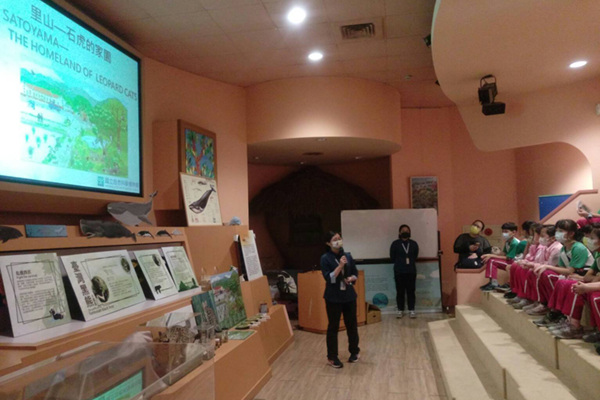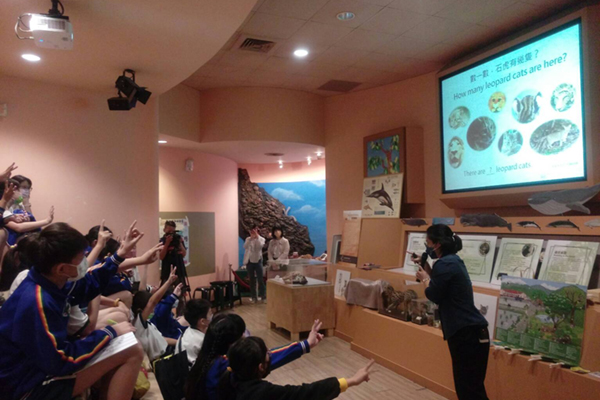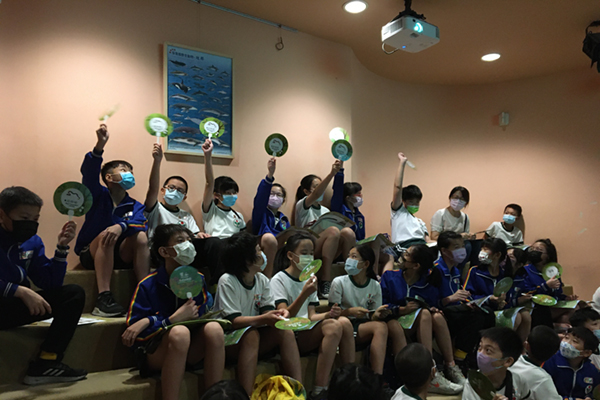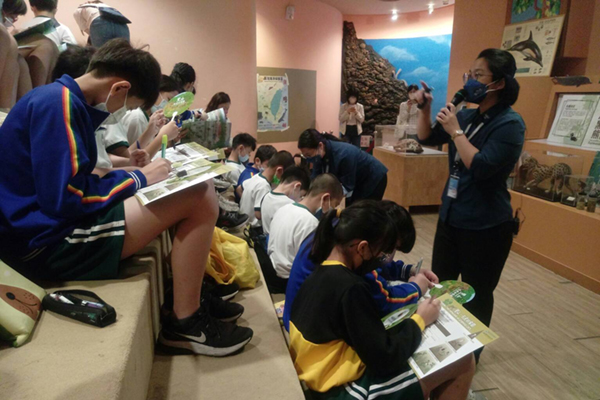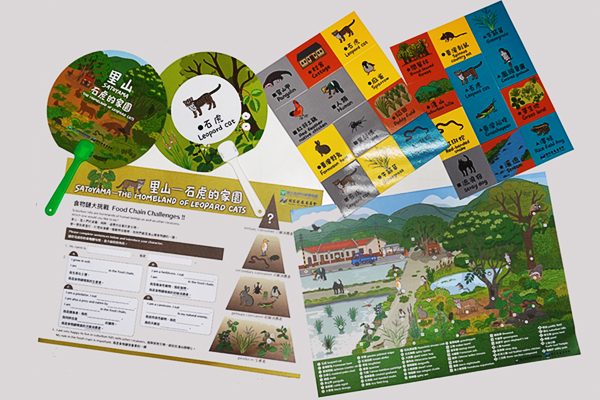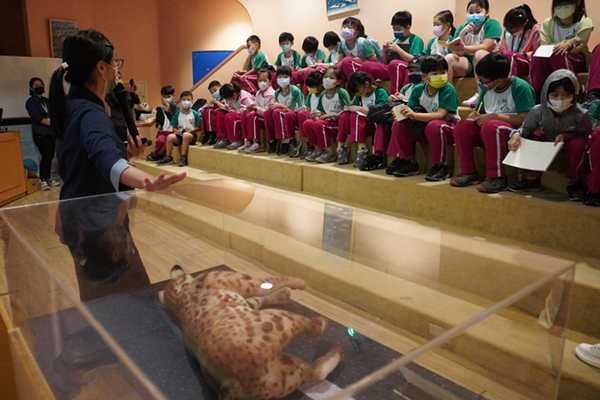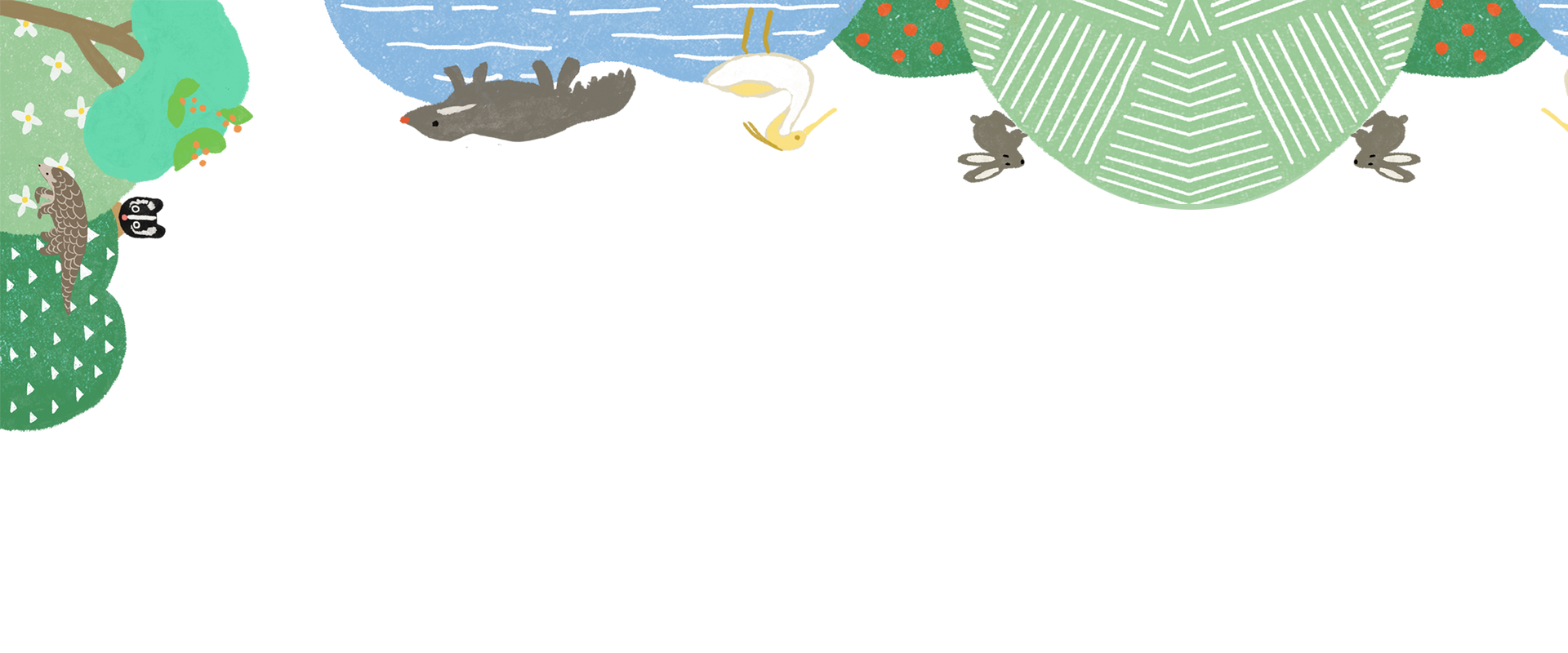
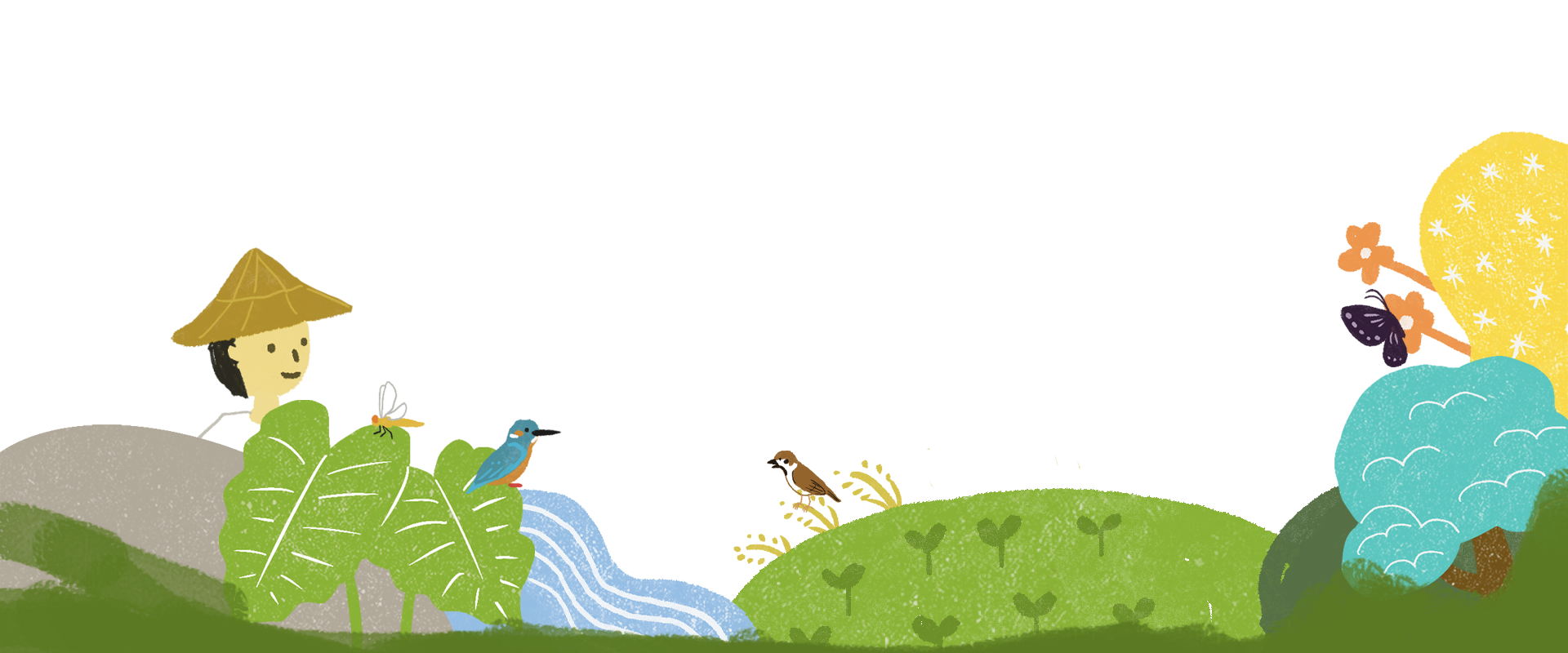
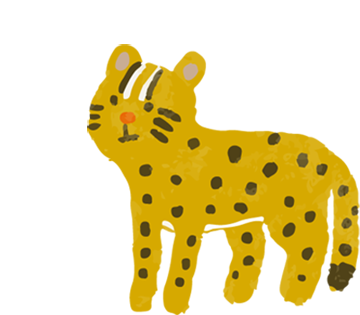

Satoyama:
The Homeland of Leopard Cats
The leopard cat(Prionailurus bengalensis) is the only remaining wild cat in Taiwan and is a critically endangered species.
During this activity, the characteristics and behaviors of the leopard cat are introduced, in addition to its habitats and interactions and relationships with other animals. Through games, participants learn about the organisms and environments of Taiwan’s suburban hills. By understanding the food chains and food web in this ecosystem, connections are made with the core concepts of the Satoyama Initiative. As such, participants gain an understanding of the interactions among people and the environment, as well as ecological issues.
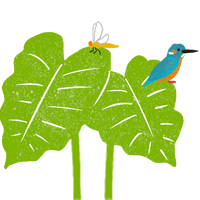
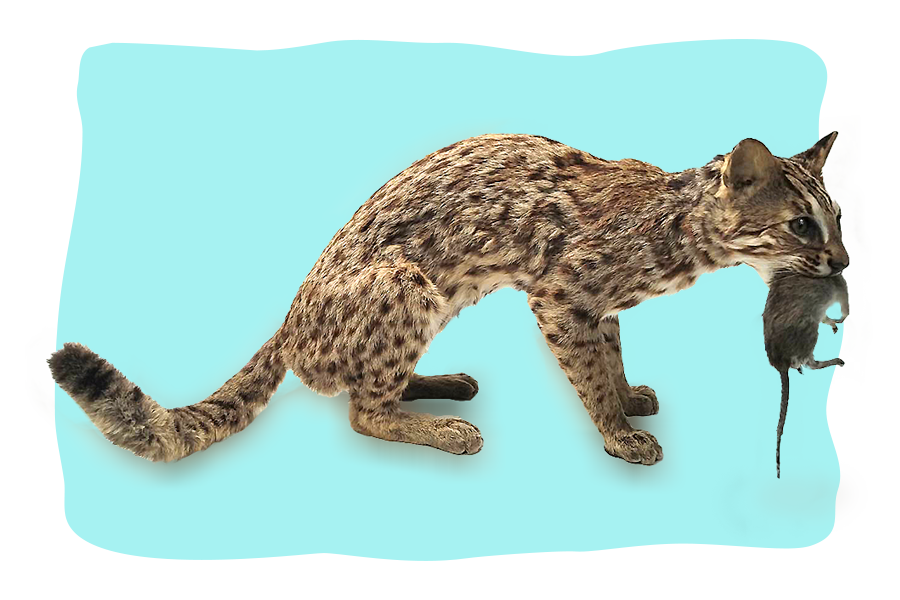
Lesson 1: Biometrics
Leopard cat Characteristics
Leopard cats are grayish brown to yellowish brown, with two stripes down the forehead, white circles around the eyes, white spots on the backs of the ears, and dark spots on the body, limbs, and tail.
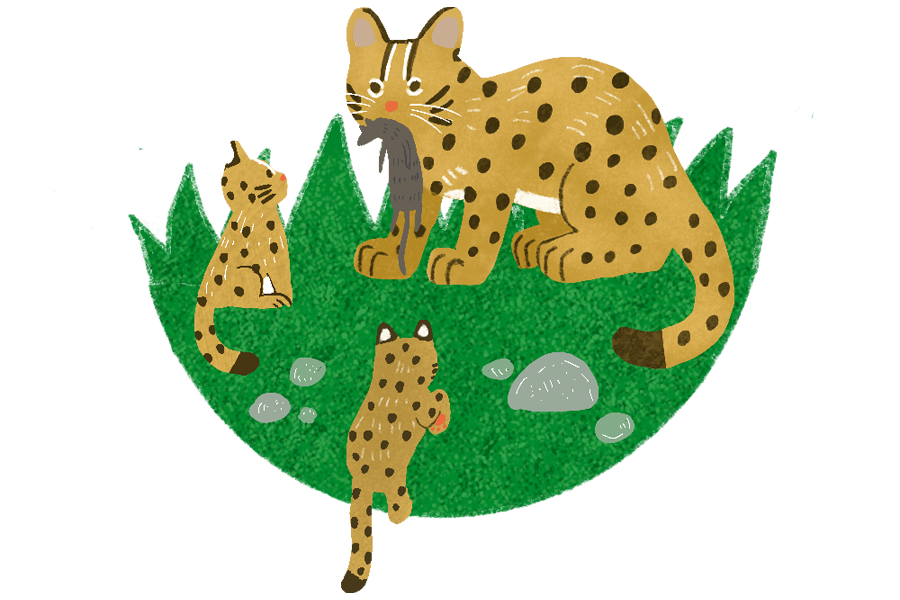
Lesson 2: The habitat
Where do leopard cats live?
Leopard cats prefer forests, shrubs, grasslands, swamps, and riverbanks at environmental junctions, known as mosaic landscapes. In farming communities in the suburban hills, man-made mosaic landscapes include fields, vegetable gardens, fruit orchards, pastures, bamboo forests, irrigation canals, and irrigation ponds, all of which are potential leopard cat habitats.
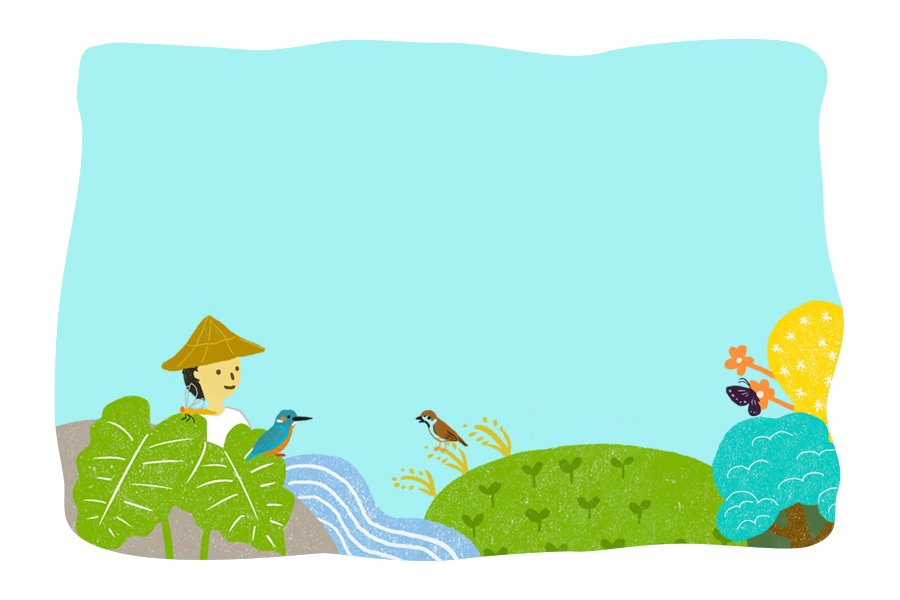

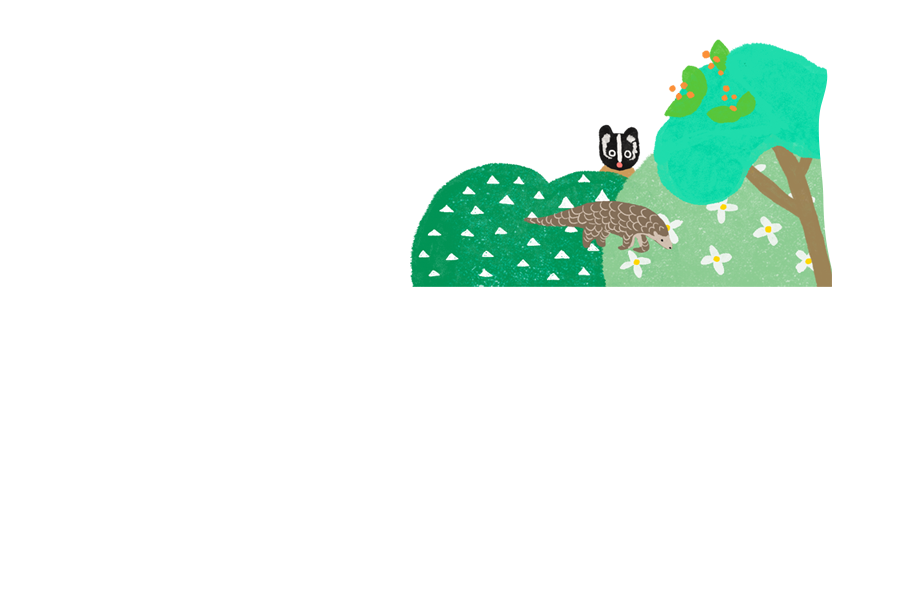

Lesson 3: Sustainable homeland
What is Satoyama?
The core concept of the Satoyama Initiative is socio-ecological production landscapes, which are dynamic mosaic landscapes that include wildlife habitats and human land use. Moreover, under long periods of interactions between humans and nature, biodiversity is maintained and the needs of people are met.
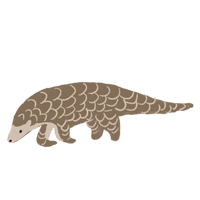
Features


© Copyright by National Museum of Natural Science.
